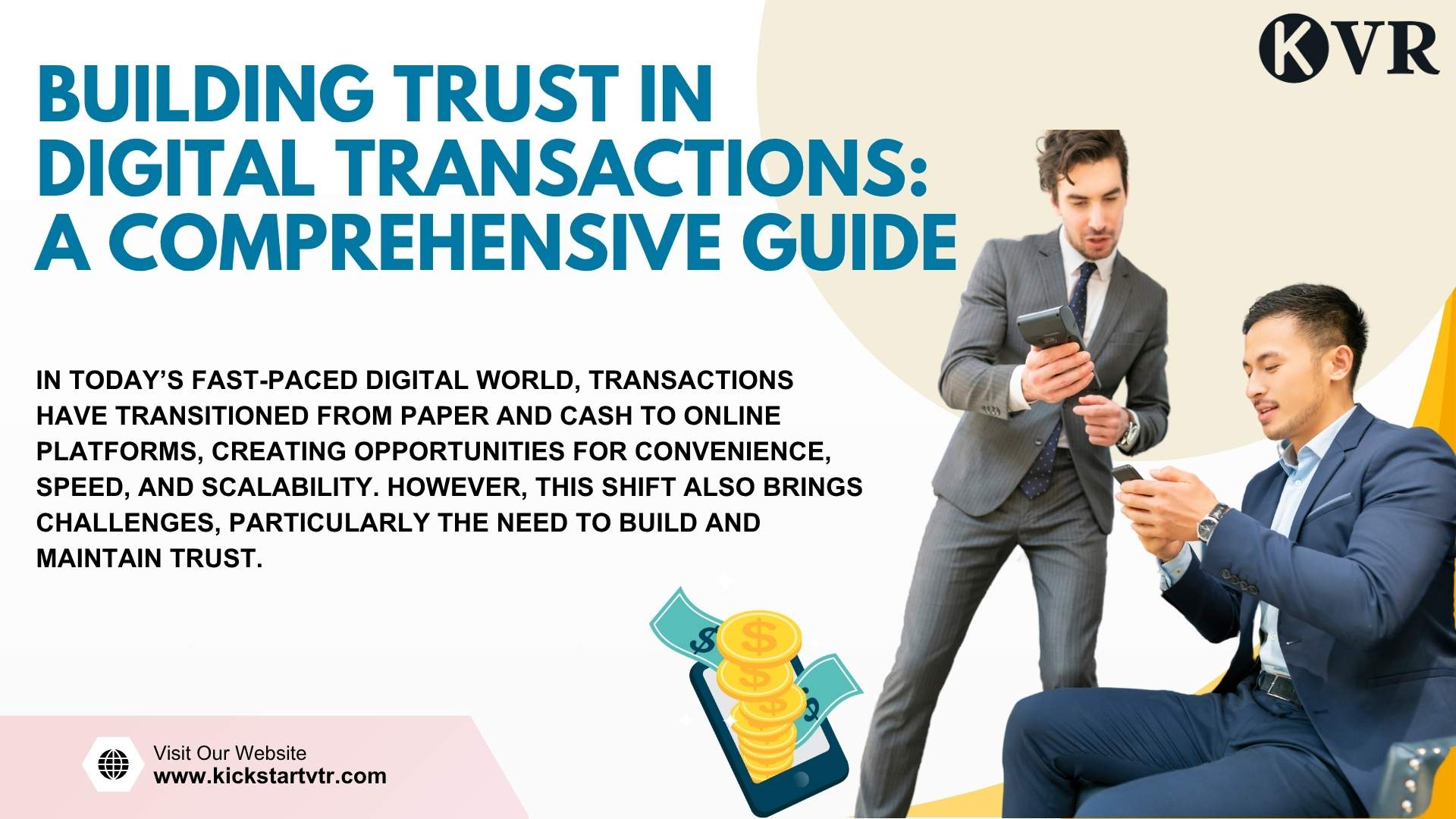Building Trust in Digital Transactions: A Comprehensive Guide
Transactions have moved from paper and cash to online platforms in the fast-paced digital environment of today, therefore generating chances for convenience, speed, and scalability. However, this shift also brings challenges particularly the need to build and maintain trust. Without trust, the entire digital transaction ecosystem is at risk as users may hesitate to adopt new technologies, fearing fraud, data breaches or lack of transparency.
This blog examines ways to increase confidence in online transactions by emphasizing important tactics and tools that promote safe dependable and trustworthy systems.
The Importance of Trust in Digital Transactions
Any banking system is built on trust and digital transactions are no different people who shop online, send money to others, or run a business need to be sure that their information is safe, their money is safe, and the deal will go through correctly.
Why Trust Matters:
1. Adoption of Digital Platforms: Lack of trust makes users less eager to test new payment systems or approaches.
2. User Attraction: Platforms that are trusted have greater rates of user retention.
3.Reputation Management: For businesses trust translates to credibility and competitive advantage.
4. Fraud Prevention: A secure and trustworthy system deters cybercriminals.
Challenges to Trust in Digital Transactions
Several challenges undermine trust in digital transactions:
1. Cybersecurity Threats:
Users are fearful of data breaches, phishing schemes, and virus assaults. High-profile hacks have sparked concerns about the security of digital networks.
2. Lack of Transparency:
User confidence can be eroded by convoluted user agreements, imprecise conditions, and hidden fees.
3. Fraudulent Activities:
Unauthorized transactions and identity theft are major concerns for users engaging in online payments.
4. Limited User Awareness:
A lack of understanding about how digital transactions work, combined with misinformation, can lead to distrust.
5. Regulatory Gaps:
The lack of clarity and consistency in regional legislation makes it difficult for people to trust digital transactions across borders.
Strategies for Building Trust in Digital Transactions
Establishing trust necessitates a comprehensive strategy that integrates technology, user education and transparent practices.
1. Implement Strong Security Measures
End-to-End Encryption: In order to prevent unwanted access it is important to encrypt all transactions thoroughly.
Multi-Factor Authentication (MFA): Add layers of security by requiring users to verify their identity through multiple methods.
Biometric Authentication: Use fingerprints, facial recognition, or voice verification for enhanced security.
Fraud Detection Systems: Use AI and machine learning to quickly identify and stop questionable activity.
2. Ensure Transparency
Clear Communication : Provide users with detailed transaction records, clear terms, and transparent pricing.
User-Friendly Interfaces: Create platforms that are straightforward and simple to use, limiting the possibility of errors.
Open Policies: Make privacy and security policies accessible and understandable.
3. Foster User Education
Awareness Campaigns: Inform consumers about safe transaction procedures, phishing schemes, and internet safety.
Guides and Tutorials: Offer step-by-step instructions on using the platform securely.
Customer Support: Provide accessible and responsive customer service to address user concerns promptly.
4. Leverage Trust-Building Technologies
Blockchain Technology: Use blockchain to create a transparent and immutable ledger of transactions.
Digital Certificates: Employ SSL/TLS certificates to assure users that the platform is authentic and secure.
Tokenization: Swap out personal information for one-of-a-kind tokens to make transactions more secure.
5. Adhere to Regulatory Standards
Compliance: Make sure user data is handled appropriately by following data protection laws including GDPR, CCPA, and PCI DSS.
Cross-Border Standards: Collaborate with international bodies to create standardized regulations for global digital transactions.
6. Build a Reputation for Reliability
Consistency: Deliver on promises and provide a seamless transaction experience.
Customer Feedback : Actively seek and incorporate user feedback to improve trust.
Social Proof : Display user reviews, ratings, and endorsements from happy customers .
The Role of Emerging Technologies
In order to improve confidence in online transactions, emerging technologies are essential.
Artificial Intelligence (AI):
AI can analyze transaction patterns, detect anomalies, and prevent fraud AI-powered chatbots can also quickly attend to consumer issues.
Blockchain :
The decentralized nature of blockchain ensures transparency and security, making it ideal for digital payments and record-keeping.
Internet of Things (IoT):
Devices that are linked to the internet can make transactions safe and easy especially in smart cities and connected ecosystems.
Quantum Cryptography:
Thanks to quantum cryptography, still in its infancy but with great potential to change data security, digital transactions will almost impossible to steal.
Case Studies: Success Stories in Building Trust
PayPal :
PayPal buyer protection program and focus on encryption have made it a leader in secure online payments .
Amazon :
By offering secure payment methods, strong customer service, and transparent pricing, Amazon fosters trust
Tide:
Together with an emphasis on openness tide's creative ideas such as lifetime free prepaid cards and cashback rewards help to establish its reputation in digital banking.
Conclusion
Developing confidence in digital transactions is an ongoing process changing with technology and user expectations rather than a one-time endeavor. Businesses that give security, openness, and user education first priority will build loyalty and confidence.
As the digital economy grows trust will remain the cornerstone of success, enabling businesses to thrive in an increasingly connected world by adopting the strategies outlined in this blog, stakeholders in the digital transaction ecosystem can ensure a safer, more reliable future for everyone.

